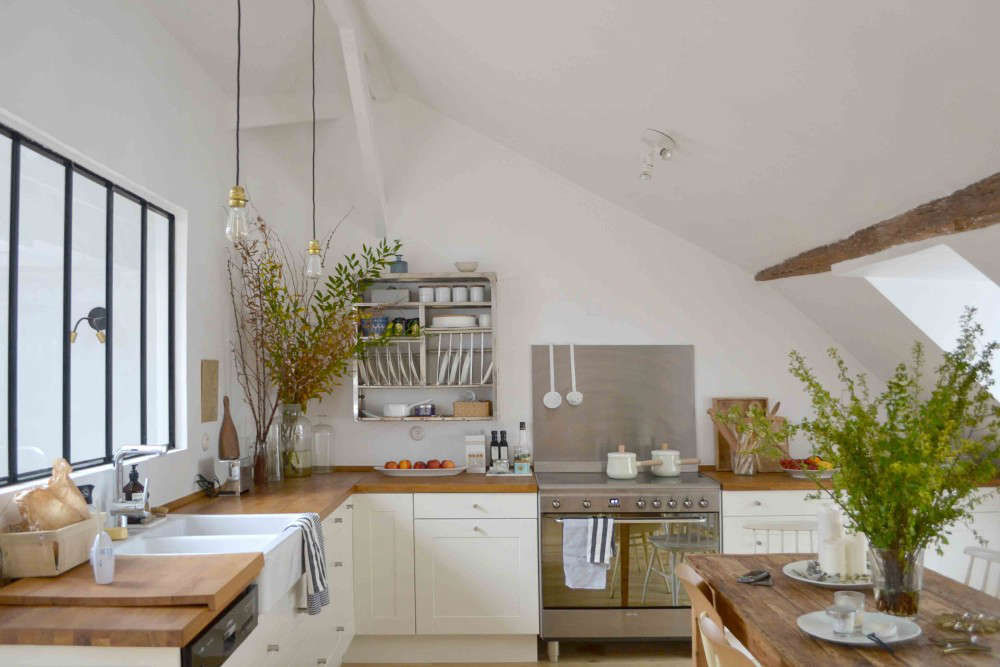

Chances are, if you’re in the market for a new range or cooktop, you already know where your allegiances lie when it comes to gas versus electric.
Chances are, if you’re in the market for a new range or cooktop, you already know where your allegiances lie when it comes to gas versus electric.
An antique Wedgewood stove in a blogger’s Montana kitchen; see Kitchen of the Week: Rustic Chic on a Budget for more.
An antique Wedgewood stove in a blogger’s Montana kitchen; see Kitchen of the Week: Rustic Chic on a Budget for more.
Many cooks prefer gas for its speedy response and the fact that you can actually see the flame.
Many cooks prefer gas for its speedy response and the fact that you can actually see the flame.
1. Gas Cooktops
1. Gas Cooktops
An cooktop with electric coils in A Chic Fixer-Upper on Fire Island, Budget Edition.
An cooktop with electric coils in A Chic Fixer-Upper on Fire Island, Budget Edition.
Cons:
Cons:
2. Electric Coil Cooktops
2. Electric Coil Cooktops
This old-school electric cooktop is still seen in many kitchens; the heating elements are round metal coils.
This old-school electric cooktop is still seen in many kitchens; the heating elements are round metal coils.
A tiny two-burner solid-disk cooktop is efficient in a super-tiny kitchenette; see Small-Space Living: An Airy Studio Apartment in a Garage for more.
A tiny two-burner solid-disk cooktop is efficient in a super-tiny kitchenette; see Small-Space Living: An Airy Studio Apartment in a Garage for more.
Cons:
Cons:
These are much the same as the cooktops with electric coils, except that its burners are solid metal disks (also called “hotplate” burners).
These are much the same as the cooktops with electric coils, except that its burners are solid metal disks (also called “hotplate” burners).
3. Solid Disk Cooktops
3. Solid Disk Cooktops
Cons:
Cons:
A streamlined cooktop in the Paris kitchen of Ochre designer Solenne de la Fouchardière.
A streamlined cooktop in the Paris kitchen of Ochre designer Solenne de la Fouchardière.
4. Smoothtop Cooktops
4. Smoothtop Cooktops
These have a top that’s, yes, smooth, and usually made of ceramic glass, with electric heating elements below.
These have a top that’s, yes, smooth, and usually made of ceramic glass, with electric heating elements below.
An induction cooktop (common in France) in Kitchen of the Week: An All-Stainless Design in a Paris Loft.
An induction cooktop (common in France) in Kitchen of the Week: An All-Stainless Design in a Paris Loft.
Cons:
Cons:
These cooktops are visually appealing, with their sleek modern style. (Yes, it does sound like magic.)
These cooktops are visually appealing, with their sleek modern style. (Yes, it does sound like magic.)
5. Induction Cooktops
5. Induction Cooktops
6. Modular Cooktops
6. Modular Cooktops
A number of manufacturers, including Jenn-Air, Miele, and Wolf, let you build a custom cooktop. Downdraft ventilation is another possible add-on.
A number of manufacturers, including Jenn-Air, Miele, and Wolf, let you build a custom cooktop. Downdraft ventilation is another possible add-on.
Parting Advice
Parting Advice
When deciding on which cooktop is right for you, research consumer reviews to determine the most durable brands, and look for easy-to-read controls on whatever model you choose.
When deciding on which cooktop is right for you, research consumer reviews to determine the most durable brands, and look for easy-to-read controls on whatever model you choose.

